- Home
- Tom Clancy
SSN Page 13
SSN Read online
Page 13
“Not yet,” Mack said, glad that his officers were both involved and aware of what Cheyenne’s orders were. Turning to the communicator, he added, “Which is where you come in. I want you to draft a message to CTF 74, tell him what we’ve found, and request permission to engage the submarines in the depot and hopefully bring down the entire platform.”
“Yes, sir,” the two officers replied. They were dismissed and both went about their work. The combat systems officer went to the quartermaster to find the best locations from which they could launch their attack. The communicator went straight to the radio room.
“Make preparations to come to periscope depth,” Mack said to the OOD.
“Make preparations to come to periscope depth, aye, sir.”
Minutes later, Cheyenne was brought from two hundred feet to periscope depth. Once the safety sweep revealed no surface contacts, the radio communications mast was quickly raised, and the message sent and receipted for. Several minutes later, after an extremely rapid response from CTF 74, the mast was lowered and the captain entered the radio room, one of the most highly classified places on the submarine.
The radio room dealt with encrypting devices and top-secret messages, and the message Cheyenne had just received was no exception. As Mack entered, the communicator handed him a computer printout.
Mack glanced at the message, paused, and then read it again.
USS INDEPENDENCE UNDER HEAVY CHINESE AIR ATTACK. AIRCRAFT WILL BE UNABLE TO ASSIST CHEYENNE IN DESTRUCTION OF OIL PLATFORM/SUBMARINE DEPOT. PERMISSION GRANTED TO DESTROY SWALLOW REEF SUBMARINE DEPOT.
The executive officer came in just as Mack was finishing reading the message for the second time. The executive officer had completed a tour of the engineering spaces with the engineer officer. “The combat systems officer told me what’s going on,” he said. “Anything I can help with?”
Mack showed him the message, and then the two of them headed for the wardroom to work out the plan for attacking the Chinese submarine depot. When they had reached an agreement on the best plan of attack, Mack instructed the executive officer to provide the appropriate details to all the areas of the ship that would play a part in the execution of the operation.
The plan they had come up with was for Cheyenne to head north at a speed of eight knots. Once they were past Royal Charlotte Reef, and as soon as they came within 35,000 yards west of the depot, they would slow to five knots and approach the depot quietly at a depth of one hundred feet. That depth would allow the top of Cheyenne’s sail to clear any of the shallow draft vessels that might be loitering overhead. They would listen for any signs of submarine or surface ship activity and then they would close in for the kill.
Once they were within 30,000 yards of the transformed oil rig they would launch eight Mk 48s at the vessels being refitted under the platform. They would then head southeast until they had exited the waters of the Spratly Islands. Once clear, they would proceed northeast along the one hundred fathom curve until they were ready to reenter the islands chain and investigate their fourth search area — Carnatic Reef.
That was the plan. Now it was up to Mack, his officers, and the crew to execute it.
With battle stations once again manned, Cheyenne slowed to five knots as they approached weapons range.
“Conn, sonar, we just detected two Huangfen missile patrol boats,” the sonar supervisor said. “They sailed underneath the depot platform and pulled in next to the Romeos. I’ll bet they’re refueling, sir.”
“Sonar, conn, anything else? Any other surface ships in the area?” asked the captain.
“Conn, sonar, it’s hard to tell. This shallow water has turned our passive sonar inside out. Sometimes it gives us what we want. Other times it’s anyone’s guess.”
“Sonar, conn, aye,” Mack said. He thought for a moment, then said, “Okay, how long until we are in firing position?”
The fire-control coordinator answered him. “It should be three more minutes, Captain.”
Tubes one and two were readied for firing. Because they had the exact location of the noisy Romeos, and because the Romeos were directly below the platform, they also had the exact location of the platform. They would launch all eight Mk 48s in succession as rapidly as possible, cutting the wires immediately after they had left the tubes. This left the torpedoes to hit their targets without guidance from Cheyenne.
Mack had the torpedoes fired two at a time, tubes one and two first, then tubes three and four. He did this twice, and the procedure didn’t take long. Cheyenne had recently had lots of experience loading and firing torpedoes, and that experience paid off.
“Conn, sonar, we just got another sonar contact,” the sonar supervisor said as the last two Mk 48s were launched. “A single Huchuan torpedo boat is heading our way. The noise level indicates it’s running at full speed.”
Mack had been briefed on the Huchuan hydrofoils and knew that the Chinese had more than seventy of them in service. He also knew that these small ships could reach speeds of more than fifty knots. The Huchuan was designated Master 53.
“What’s the range to the Huchuan, Master 53?” asked Mack.
“We can’t tell, Captain,” the fire-control coordinator answered. “The water’s too shallow and we can’t do an accurate TMA on the boat. Bearings are coming in over a twenty-degree spread.”
“Well, then,” Mack said, “we have no choice. We have to go active.”
This was one of the rare times Mack could feel right using his BSY-1 sonar system in an active mode. For one thing, the Chinese already knew where they were. Eight torpedoes on essentially the same bearing were a dead giveaway. Besides, he knew that any Chinese vessels with sonar in the area would be concentrating on the eight Mk 48s headed for the naval depot under the abandoned oil rig. With luck, they would be more worried about that and wouldn’t care about Cheyenne’s rushed getaway.
The Huchuan hydrofoil coming their way was Mack’s biggest concern at the moment, but the hydrofoils had no sonar. Without a sonar, they would be unable to determine if Cheyenne was active, or even if she launched a torpedo in their direction.
Cheyenne’s active sonar pings echoed through the hull. Being foil-borne, sonar was actually tracking the wake it generated, not the Huchuan itself. But that was enough for a “down-the-throat” shot.
When Cheyenne’s sonar went active, Mack was able to acquire an accurate firing solution to the Chinese patrol boat. He ordered tube one fired at the Chinese Huchuan. The Mk 48 was set to detonate, at a depth of ten feet, just beneath the foils.
The Huchuan, without a sonar system, was unaware that a torpedo was heading its way and continued on in the direction they expected Cheyenne to be. The captain of the hydrofoil had calculated Cheyenne’s position correctly — but that was also the same direction from which the latest Mk 48 was coming. This brought them closer and closer to the oncoming torpedo, closing rapidly at a combined speed of over one hundred knots.
“Conn, sonar, our Mk 48 just detonated beneath the PT boat.”
The Huchuan went airborne, propelled by the force of the water exploding up from beneath it. It rotated in a spiral as it flew, killing those sailors aboard without seat belts as they were thrown around like “BBs in a boxcar.” Moments later, those who had seat belts — mostly bridge personnel — were killed instantly when the boat finally hit the water, upside down, at fifty knots.
When sonar also reported eight extremely large explosions followed by a dozen smaller ones, Mack went to periscope depth and then broached to get the periscope high enough to visually assess the damage.
Mack was pleased with what he saw. They had blown up two Chinese submarines, Masters 49 and 50, two missile patrol boats, Masters 51 and 52, and a torpedo hydrofoil, Master 53. Most important, though, the Chinese naval depot was no longer usable, with fires raging on the platform as it tilted into the sea.
Cheyenne’s captain grinned fiercely, pride in his ship and his crew welling up within him. They’d been given a diffi
cult assignment, and once again they’d carried it out.
He was about to order Cheyenne to resume her patrol, heading southeast, out of the islands, when the executive officer walked up to Mack, bringing with him a quiet sense of urgency.
“Captain,” he said, “we just received an emergency message. Our current mission has been diverted.” He showed the new orders to Mack.
Cheyenne was to deploy directly to the north of the Spratly Islands. A Chinese convoy was forming and would be heading south for the islands. Cheyenne’s orders were to sink it. But not just yet.
Cheyenne had expended more than half the Mk 48s she was given. She had enough left on board to complete her current mission, but not enough to take out an entire convoy.
Feeling his earlier sense of pride in his crew turn to frustration at the loadouts he’d been given, Mack ordered Cheyenne to return to McKee. They’d come back, he knew, and deal with that convoy… but not until they’d had the chance to rearm.
7. Target: Convoy
Mack was angry. Cheyenne had made it through her recent encounters unscathed, and was now safely moored alongside McKee, but the fact that Mack and his crew were alive was a tribute to their own superb training, not any reflection on the intelligence they had received. And that was what had Mack so angry. He didn’t object to his orders. His job was to take his submarine and his crew into danger — into battle itself, if necessary — but he insisted on giving his men every chance to survive the conflict. That meant proper weaponry, reliable equipment, and accurate information. Cheyenne had supplied the first two components, but naval intelligence had dropped the ball on the third.
Mack had been around long enough to know that sometimes lousy intelligence happened. That was why it was called the “fog of war.” But that didn’t make him feel any better. Not when it was his submarine and his crew at risk because of someone else’s mistake.
The one good thing that had come out of that mess — besides Cheyenne’s performance — was the P4 message he held in his hand. The P4, or “personal for,” message was an apology from USCINCPAC himself for the lousy intelligence Cheyenne had been provided before the last mission. Mack especially liked the part where the admiral had quoted the CNO (Chief of Naval Operations), currently the most senior officer in the Navy, as taking a personal interest in the intelligence fiasco.
He opened the message and read that part one more time. The CNO had directed a “reevaluation of procedures and decision-making personnel” within the naval intelligence chain of command. Mack smiled. That meant a lot of people were going to come under fire, and that was good. With luck, the next commanding officer and crew going into battle would be better prepared with accurate intelligence.
Especially since, Mack suspected, he knew who that next commanding officer was going to be. Cheyenne was still the best asset the U.S. Navy had in the area, at least for the kinds of missions that were being conducted, and Mack was pretty sure that they would be called upon again soon.
“Excuse me, Captain,” the executive officer said. He had just climbed to the bridge and poked his head through the upper access hatch. “They’re waiting for you on McKee. Sounds like something hot.”
“Thank you,” Mack said. “Any idea what’s up?”
“Well, sir, judging from the latest intelligence…” The executive officer let the sentence taper off as Mack shot him a hard look.
“Not funny.”
“No, sir, not at all, but snafus do happen. I’m just glad that the crew was ready for the challenge.”
Mack nodded and the executive officer continued, “From what I can gather from the intelligence officer on board McKee, the Chinese merchant convoy that was assembling off the south coast of China has decided to make a fast break for the Spratlys. My guess is somebody figures that we didn’t make it out of that last scrap intact and they want to take advantage of that by trying to get some supplies through while there’s no one around to stop them.”
Mack nodded. That was a good reading of the situation. Except that the Chinese were wrong. Cheyenne had survived, and was, no doubt, about to be assigned to show the Chinese how wrong they were.
Captain Mackey was looking over the side of the bridge as the first Mk 48 was already being hoisted into the air and swung over from McKee to Cheyenne’s waiting crew. The job had to be hot if weapons were being transferred even before the mission debriefing.
Mack liked this assignment. He couldn’t recall the last time an American submarine went after a real merchant convoy. During World War II, the Japanese had not developed a real convoy system like the United States had with the British. Most of the ships American submarines sank were independents or just ships travelling together. Closely escorted convoys like this one just weren’t used.
Which meant that with this mission Cheyenne would get to set the standard for how a modern convoy battle occurred. Mack liked that a lot.
Cheyenne had more sophisticated weapons than were available during World War II, weapons that were faster and had a longer range, but so did the escort defenses. It would still be a case of Cheyenne getting into position as quietly as possible and then hitting the convoy before they could react.
“So we get to stop that convoy,” Mack said. He nodded and patted the side of the bridge. “We can do that.”
“Yes, sir,” the executive officer said. Then his eyes focused beyond the captain. “Looks like they’re getting impatient on McKee. The combat systems officer and operations officer are already over there.”
Mack glanced over at the submarine tender and nodded. “I’ll be back as soon as I can. Let me know how long until the reload is completed when I get back. I suspect we’ll need to be under way again as soon as possible.”
The executive officer gave a quick salute and said, “Aye, aye, sir,” as Mack scrambled down the ladder to the control room. He then turned and looked out over the vast expanse of the South China Sea and wondered what the next few days would bring and how a modern convoy battle would really shape up.
* * *
Far out to sea, the same thoughts were going through the mind of the Chinese escort squadron commander as the convoy was steaming toward the Spratly Islands. The best speed some of the convoy ships could make was ten knots, which was far too slow to attempt a sudden dash to the Spratly Islands. But the South Sea fleet commander had been adamant about taking some of the AK troop transport ships and an ARS repair ship with the convoy.
So now he was in command of a slow convoy with an escort squadron that was too small and underarmed. Only one of his seven ships carried helicopters for ASW prosecution, a mission area that the entire Chinese fleet was sorely inexperienced in. But they did have a lot of ASW ordnance. Years of cooperation with the then Soviet navy had sponsored a reliance on massive firepower. If an American submarine was unfortunate enough to be caught trying to torpedo any of his ships, a tremendous amount of firepower was available to respond. The big problem would be finding the American submarine.
The United States had notoriously quiet submarines. The first indication the Chinese would have that an American was out there would probably be when a ship blew up. But that could not be helped.
The convoy commander tightened his knuckles until white skin showed clearly through the gloom of the closing night. Rapid response and good joss would have to answer for American technology. That and a good plan.
He permitted himself a slight smile. Since he could not dissuade the admiral from the convoy mission, he had at least tried his best to guarantee its safe arrival. He knew that the best weapon against a submarine was another submarine. Years of experience had taught him that. It was common sense and a frequently quoted slogan among American submariners, but none of the quiet diesel submarines in the Chinese fleet could keep up for long while underwater and running on its batteries, even with his slow convoy.
But they could be strategically placed in carefully selected locations and thus be in position to listen for, detect, and then kill an
y American submarine that attempted to attack the convoy.
He had no doubt that an American submarine would find and track the convoy. He had no doubt that an American submarine would attack the convoy. He had no doubt that a few, perhaps even several, of his ships would be sunk by the American submarine. But he also had no doubt that the American captain would never suspect that a string of hidden Chinese submarines would be strewn along the convoy’s path like a manned minefield.
The American captain would pay dearly for attacking the convoy.
* * *
On board Cheyenne, plans for the attack were being made.
“Be seated, gentlemen.” Captain Mackey waved his officers to sit down on the wardroom chairs and bench seat. “Here’s the situation. A Chinese merchant convoy under close escort is headed toward the Spratly Islands with supplies, troops, and a repair ship. As we’ve already found out, the UN total exclusion zone doesn’t mean anything to them. Our job is to intercept the convoy and prevent it from reaching the Spratlys by any means necessary.”
Mack paused to let that information sink in. “Okay. The operations officer will let you know what we’re up against.”
Mack leaned back in his chair and watched his officers as he listened to the briefing. Mack smiled to himself. They were ready. Their last foray had been a crucible to harden them into battle-tested veterans.
As Mack assessed his officers, the operations officer went on with his report. “The convoy itself is comprised of four military troop transports, one ARS-type repair ship, four merchant container ships, and one merchant tanker. The convoy escort is made up of two Luda class destroyers, four Jianghu class frigates, and one Luhu class destroyer carrying two ASW helos. The convoy should be able to make thirteen knots, but our satellites are tracking it at only ten. We should be able to be in position just after they pass the exclusion zone at dusk in two days. Looks like they want to make the run in darkness to avoid detection for as long as possible.”

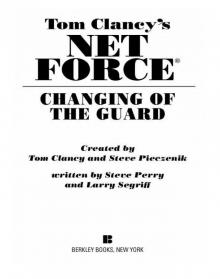 Changing of the Guard
Changing of the Guard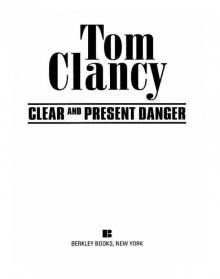 Clear and Present Danger
Clear and Present Danger Hounds of Rome
Hounds of Rome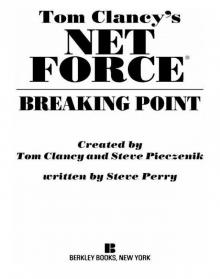 Breaking Point
Breaking Point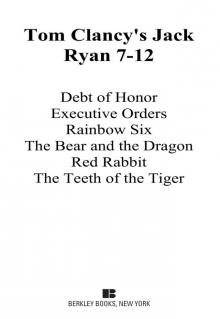 Tom Clancy's Jack Ryan Books 7-12
Tom Clancy's Jack Ryan Books 7-12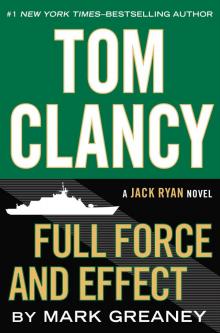 Full Force and Effect
Full Force and Effect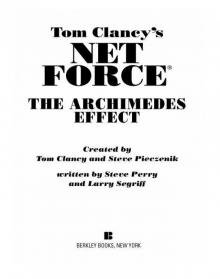 The Archimedes Effect
The Archimedes Effect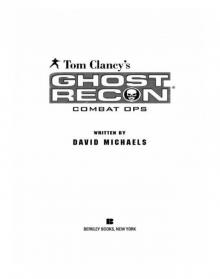 Combat Ops
Combat Ops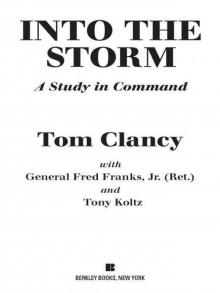 Into the Storm: On the Ground in Iraq
Into the Storm: On the Ground in Iraq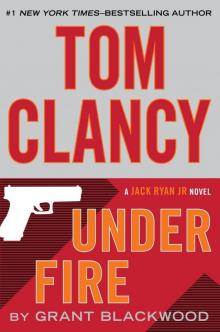 Under Fire
Under Fire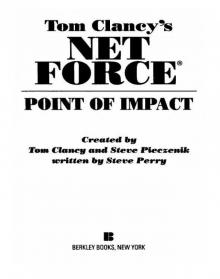 Point of Impact
Point of Impact Red Rabbit
Red Rabbit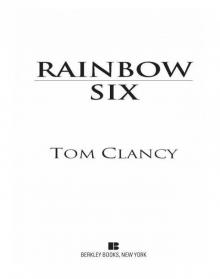 Rainbow Six
Rainbow Six The Hunt for Red October
The Hunt for Red October The Teeth of the Tiger
The Teeth of the Tiger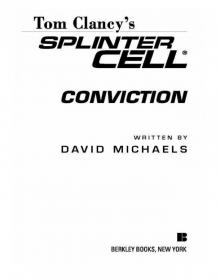 Conviction (2009)
Conviction (2009)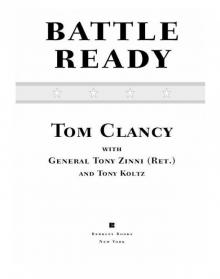 Battle Ready
Battle Ready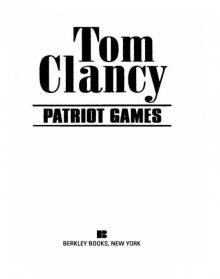 Patriot Games
Patriot Games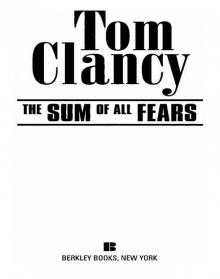 The Sum of All Fears
The Sum of All Fears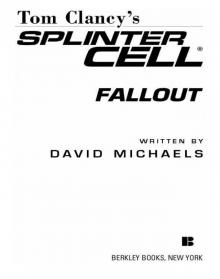 Fallout (2007)
Fallout (2007) Red Storm Rising
Red Storm Rising The Cardinal of the Kremlin
The Cardinal of the Kremlin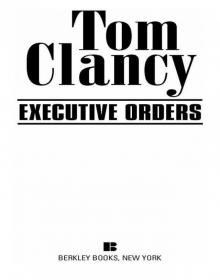 Executive Orders
Executive Orders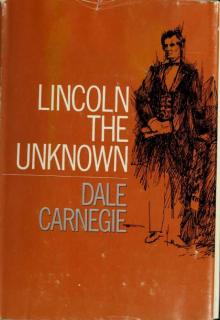 Lincoln, the unknown
Lincoln, the unknown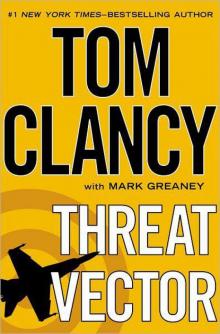 Threat Vector
Threat Vector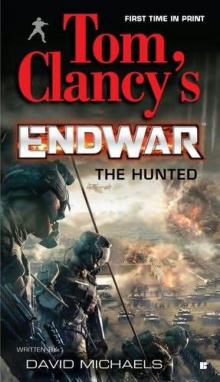 The Hunted
The Hunted Shadow Warriors: Inside the Special Forces
Shadow Warriors: Inside the Special Forces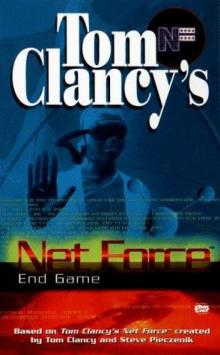 End Game
End Game Special Forces: A Guided Tour of U.S. Army Special Forces
Special Forces: A Guided Tour of U.S. Army Special Forces Locked On
Locked On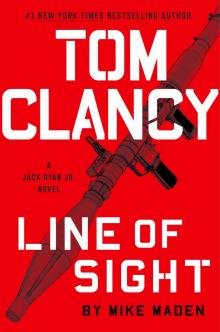 Line of Sight
Line of Sight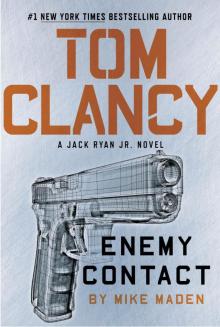 Tom Clancy Enemy Contact - Mike Maden
Tom Clancy Enemy Contact - Mike Maden Fighter Wing: A Guided Tour of an Air Force Combat Wing
Fighter Wing: A Guided Tour of an Air Force Combat Wing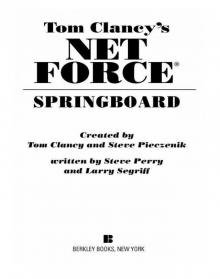 Springboard
Springboard Line of Sight - Mike Maden
Line of Sight - Mike Maden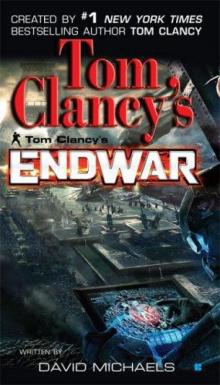 EndWar
EndWar Dead or Alive
Dead or Alive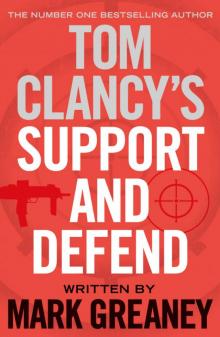 Tom Clancy Support and Defend
Tom Clancy Support and Defend Checkmate
Checkmate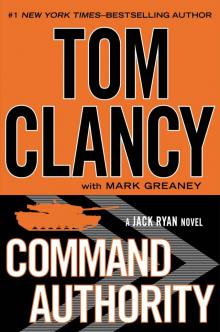 Command Authority
Command Authority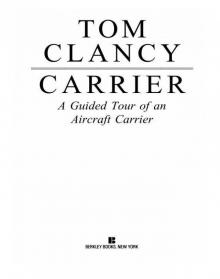 Carrier: A Guided Tour of an Aircraft Carrier
Carrier: A Guided Tour of an Aircraft Carrier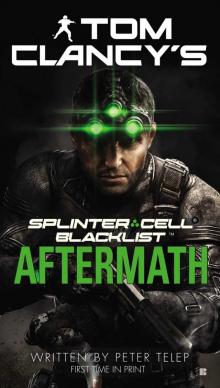 Blacklist Aftermath
Blacklist Aftermath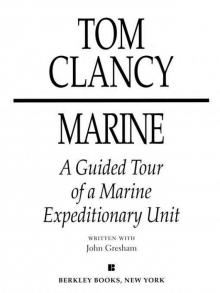 Marine: A Guided Tour of a Marine Expeditionary Unit
Marine: A Guided Tour of a Marine Expeditionary Unit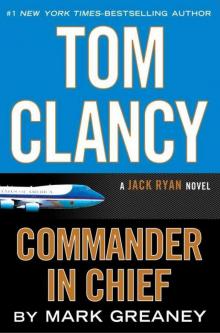 Commander-In-Chief
Commander-In-Chief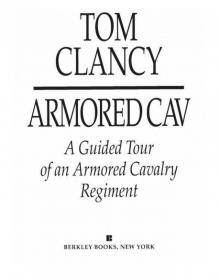 Armored Cav: A Guided Tour of an Armored Cavalry Regiment
Armored Cav: A Guided Tour of an Armored Cavalry Regiment Tom Clancy's Jack Ryan Books 1-6
Tom Clancy's Jack Ryan Books 1-6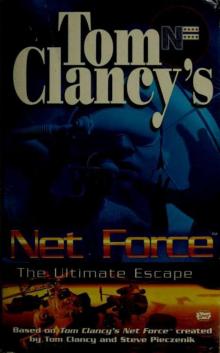 The Ultimate Escape
The Ultimate Escape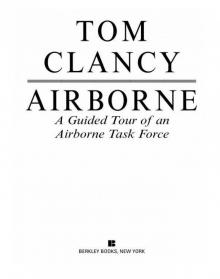 Airborne: A Guided Tour of an Airborne Task Force
Airborne: A Guided Tour of an Airborne Task Force Debt of Honor
Debt of Honor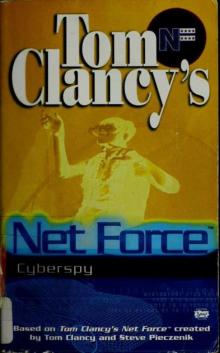 Cyberspy
Cyberspy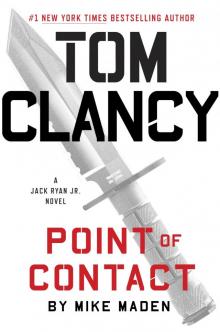 Point of Contact
Point of Contact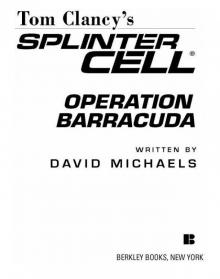 Operation Barracuda (2005)
Operation Barracuda (2005)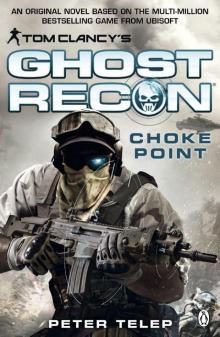 Choke Point
Choke Point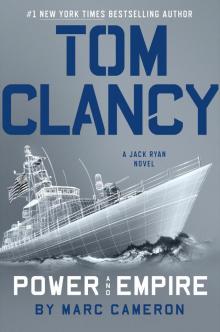 Power and Empire
Power and Empire Every Man a Tiger: The Gulf War Air Campaign
Every Man a Tiger: The Gulf War Air Campaign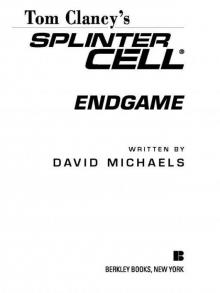 Endgame (1998)
Endgame (1998)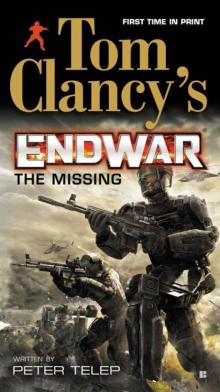 EndWar: The Missing
EndWar: The Missing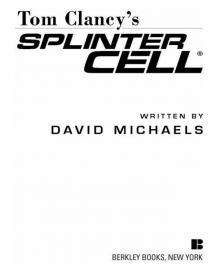 Splinter Cell (2004)
Splinter Cell (2004)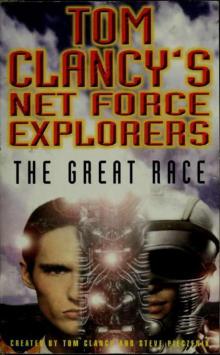 The Great Race
The Great Race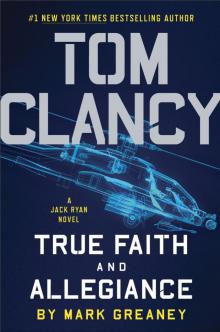 True Faith and Allegiance
True Faith and Allegiance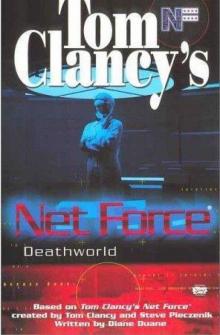 Deathworld
Deathworld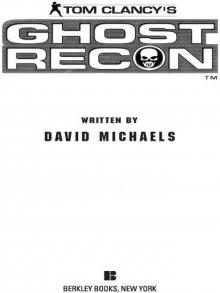 Ghost Recon (2008)
Ghost Recon (2008)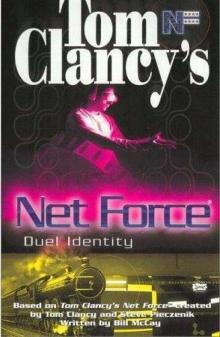 Duel Identity
Duel Identity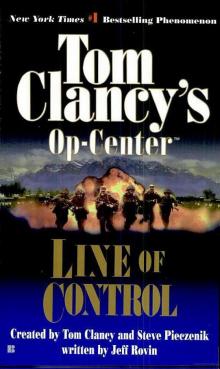 Line of Control o-8
Line of Control o-8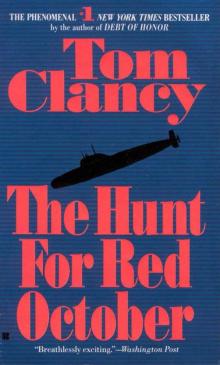 The Hunt for Red October jr-3
The Hunt for Red October jr-3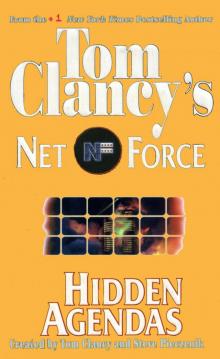 Hidden Agendas nf-2
Hidden Agendas nf-2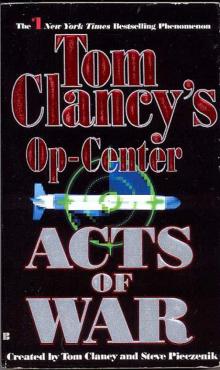 Acts of War oc-4
Acts of War oc-4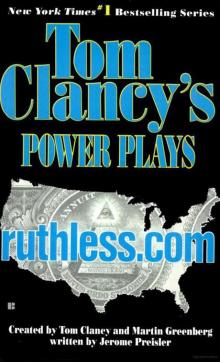 Ruthless.Com pp-2
Ruthless.Com pp-2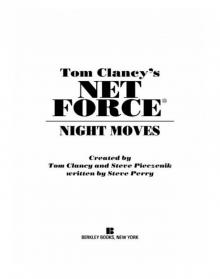 Night Moves
Night Moves The Hounds of Rome - Mystery of a Fugitive Priest
The Hounds of Rome - Mystery of a Fugitive Priest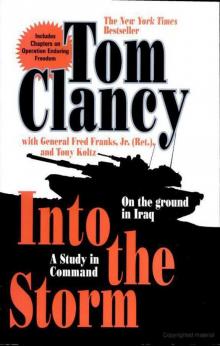 Into the Storm: On the Ground in Iraq sic-1
Into the Storm: On the Ground in Iraq sic-1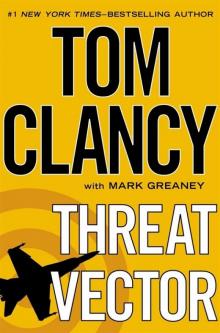 Threat Vector jrj-4
Threat Vector jrj-4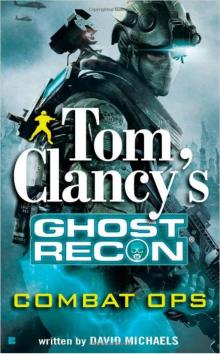 Combat Ops gr-2
Combat Ops gr-2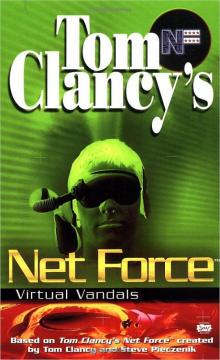 Virtual Vandals nfe-1
Virtual Vandals nfe-1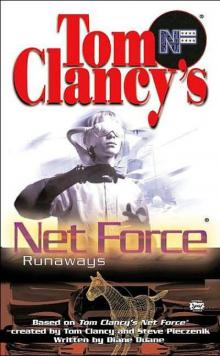 Runaways nfe-16
Runaways nfe-16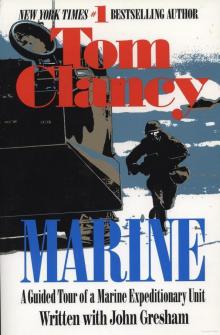 Marine: A Guided Tour of a Marine Expeditionary Unit tcml-4
Marine: A Guided Tour of a Marine Expeditionary Unit tcml-4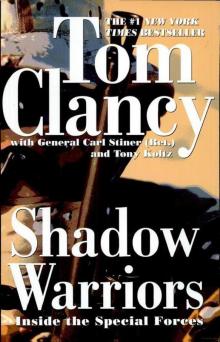 Shadow Warriors: Inside the Special Forces sic-3
Shadow Warriors: Inside the Special Forces sic-3 Jack Ryan Books 1-6
Jack Ryan Books 1-6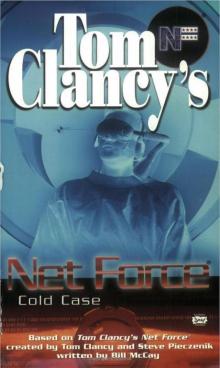 Cold Case nfe-15
Cold Case nfe-15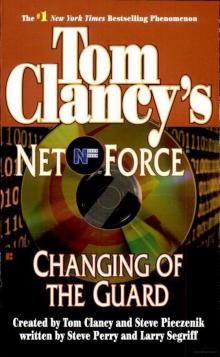 Changing of the Guard nf-8
Changing of the Guard nf-8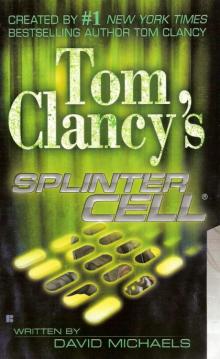 Splinter Cell sc-1
Splinter Cell sc-1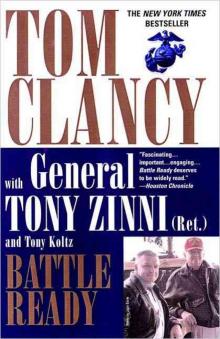 Battle Ready sic-4
Battle Ready sic-4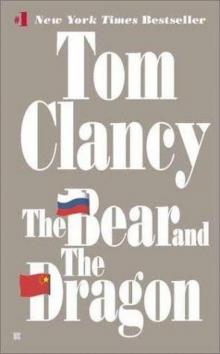 The Bear and the Dragon jrao-11
The Bear and the Dragon jrao-11 Fighter Wing: A Guided Tour of an Air Force Combat Wing tcml-3
Fighter Wing: A Guided Tour of an Air Force Combat Wing tcml-3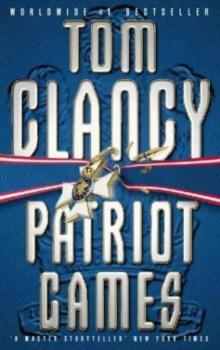 Patriot Games jr-1
Patriot Games jr-1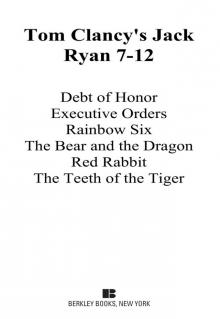 Jack Ryan Books 7-12
Jack Ryan Books 7-12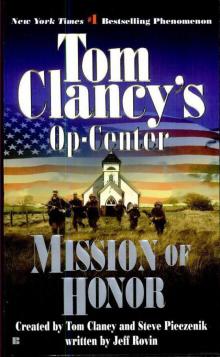 Mission of Honor o-9
Mission of Honor o-9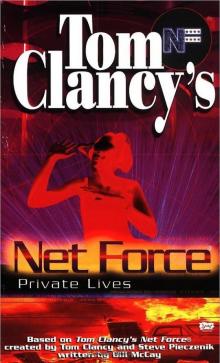 Private Lives nfe-9
Private Lives nfe-9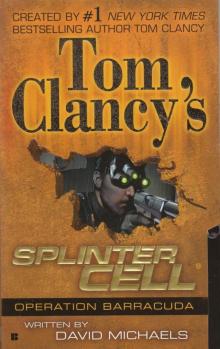 Operation Barracuda sc-2
Operation Barracuda sc-2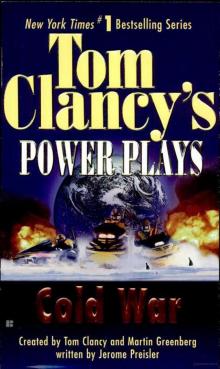 Cold War pp-5
Cold War pp-5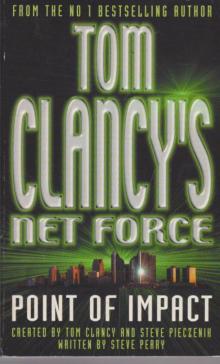 Point of Impact nf-5
Point of Impact nf-5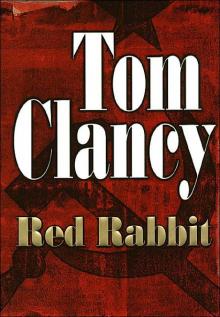 Red Rabbit jr-9
Red Rabbit jr-9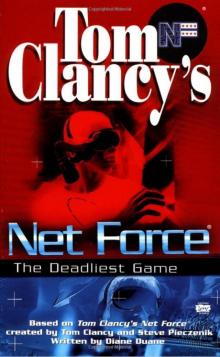 The Deadliest Game nfe-2
The Deadliest Game nfe-2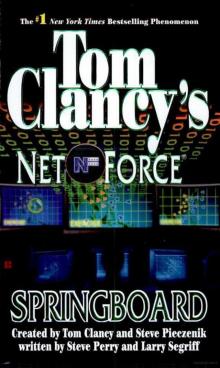 Springboard nf-9
Springboard nf-9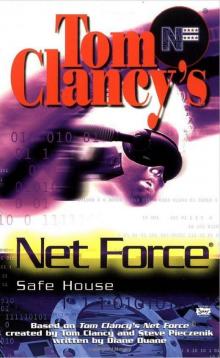 Safe House nfe-10
Safe House nfe-10 EndWar e-1
EndWar e-1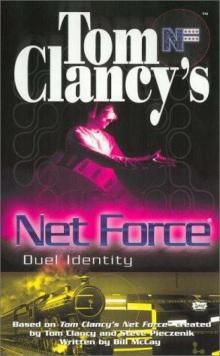 Duel Identity nfe-12
Duel Identity nfe-12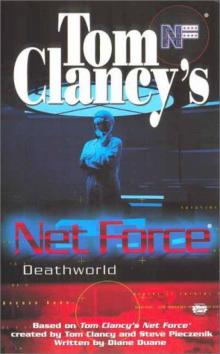 Deathworld nfe-13
Deathworld nfe-13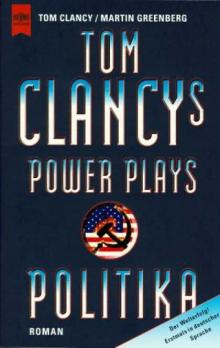 Politika pp-1
Politika pp-1 Rainbow Six jr-9
Rainbow Six jr-9 Tom Clancy's Power Plays 1 - 4
Tom Clancy's Power Plays 1 - 4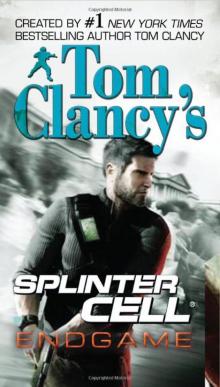 Endgame sc-6
Endgame sc-6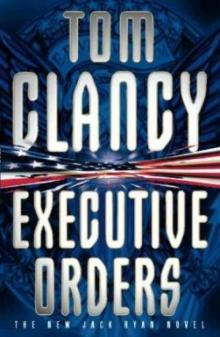 Executive Orders jr-7
Executive Orders jr-7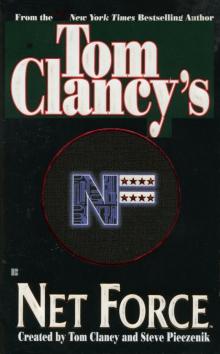 Net Force nf-1
Net Force nf-1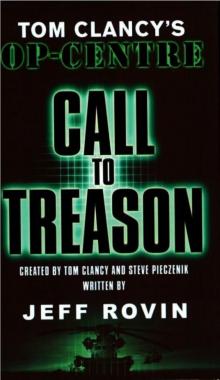 Call to Treason o-11
Call to Treason o-11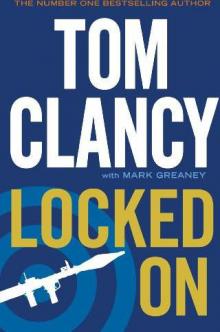 Locked On jrj-3
Locked On jrj-3 Against All Enemies
Against All Enemies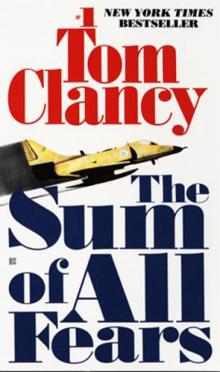 The Sum of All Fears jr-7
The Sum of All Fears jr-7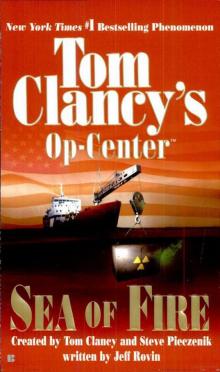 Sea of Fire o-10
Sea of Fire o-10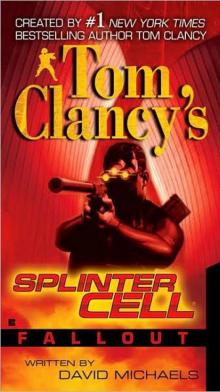 Fallout sc-4
Fallout sc-4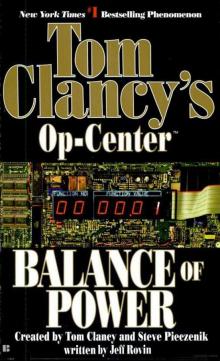 Balance of Power o-5
Balance of Power o-5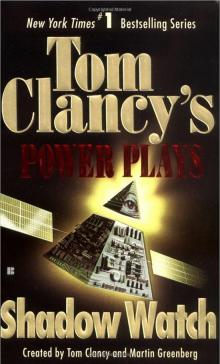 Shadow Watch pp-3
Shadow Watch pp-3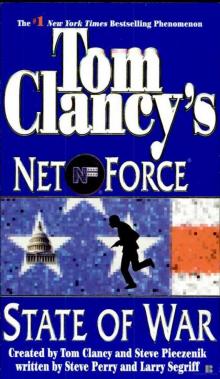 State of War nf-7
State of War nf-7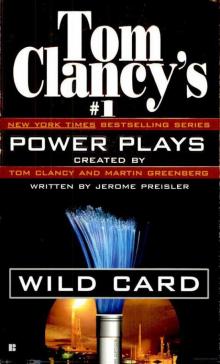 Wild Card pp-8
Wild Card pp-8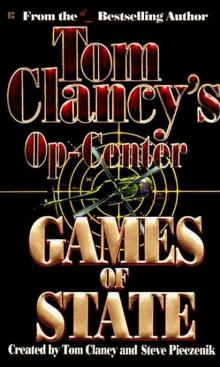 Games of State o-3
Games of State o-3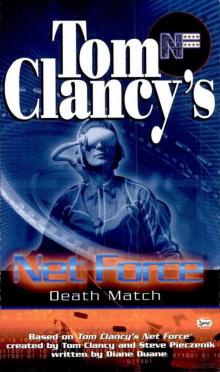 Death Match nfe-18
Death Match nfe-18 Against All Enemies mm-1
Against All Enemies mm-1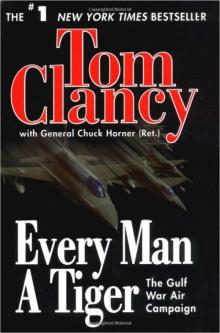 Every Man a Tiger: The Gulf War Air Campaign sic-2
Every Man a Tiger: The Gulf War Air Campaign sic-2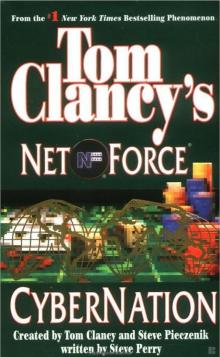 Cybernation nf-6
Cybernation nf-6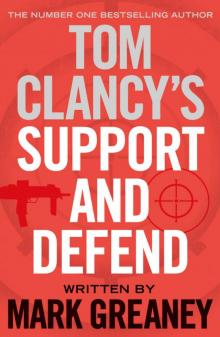 Support and Defend
Support and Defend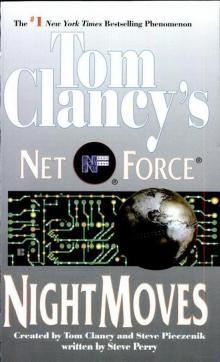 Night Moves nf-3
Night Moves nf-3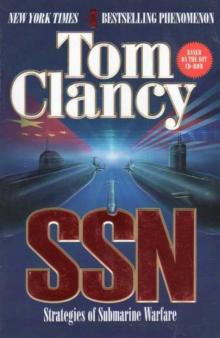 SSN
SSN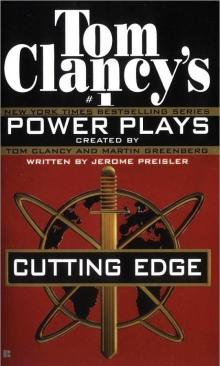 Cutting Edge pp-6
Cutting Edge pp-6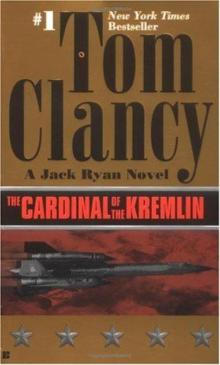 The Cardinal of the Kremlin jrao-5
The Cardinal of the Kremlin jrao-5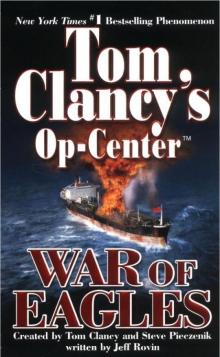 War of Eagles o-12
War of Eagles o-12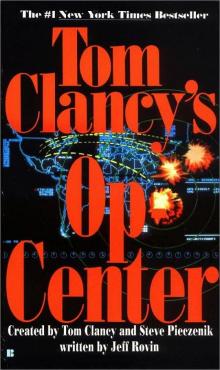 Op-Center o-1
Op-Center o-1 Mirror Image o-2
Mirror Image o-2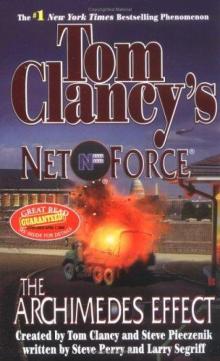 The Archimedes Effect nf-10
The Archimedes Effect nf-10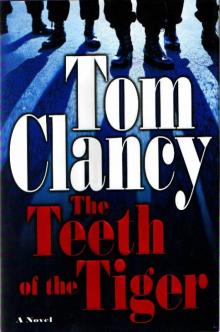 Teeth of the Tiger jrj-1
Teeth of the Tiger jrj-1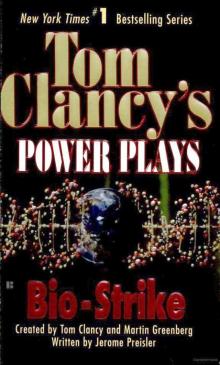 Bio-Strike pp-4
Bio-Strike pp-4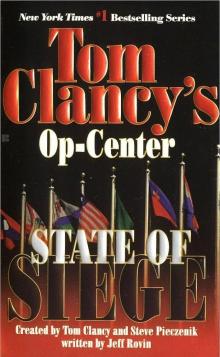 State of Siege o-6
State of Siege o-6 Debt of Honor jr-6
Debt of Honor jr-6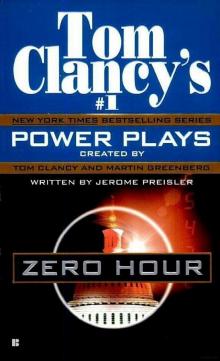 Zero Hour pp-7
Zero Hour pp-7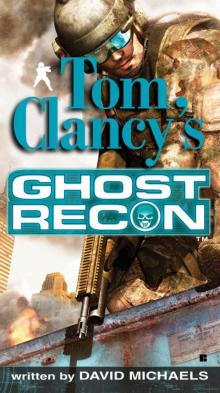 Ghost Recon gr-1
Ghost Recon gr-1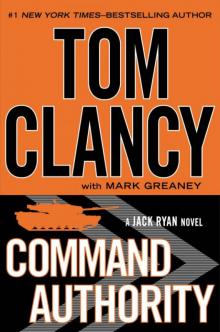 Command Authority jr-10
Command Authority jr-10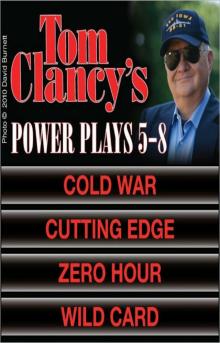 Tom Clancy's Power Plays 5 - 8
Tom Clancy's Power Plays 5 - 8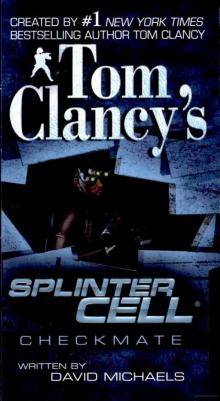 Checkmate sc-3
Checkmate sc-3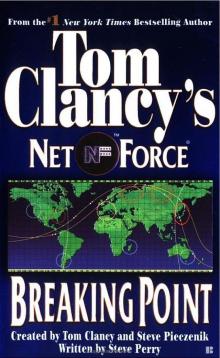 Breaking Point nf-4
Breaking Point nf-4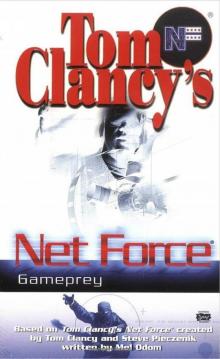 Gameprey nfe-11
Gameprey nfe-11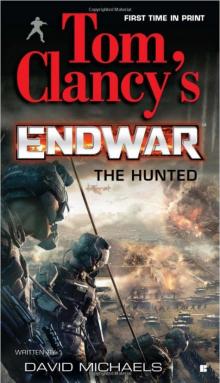 The Hunted e-2
The Hunted e-2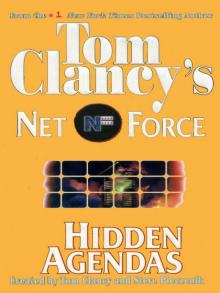 Hidden Agendas
Hidden Agendas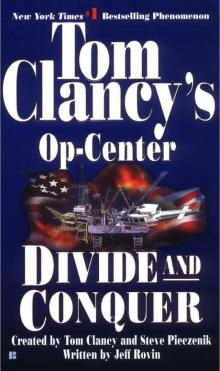 Divide and Conquer o-7
Divide and Conquer o-7